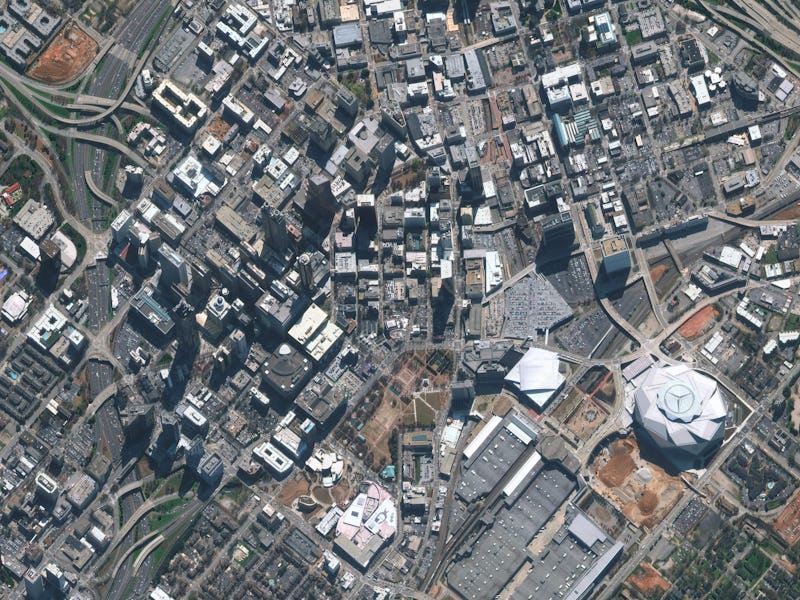Extreme heat study reveals which US cities are most vulnerable
In a new study, Atlanta, Georgia makes two unfortunate lists.

Even in parts of the United States that are notoriously hot, like California's Death Valley, it's getting hotter. On Sunday, Death Valley reached the hottest global temperature since records officially began in 1931. The area reportedly clocked in at 130 degrees Fahrenheit.
The notion that a place known for extreme heat can still become even more shockingly hot is explored in new research, which examined the locally specific factors that make extreme heat uncomfortable and potentially dangerous. Focusing on local factors, including population, helped researchers determine which major US cities are set the face the most dramatic heat exposure in the coming decades.
Major metropolitan areas including New York, Los Angeles, and Washington, DC will see the greatest absolute increase in people affected by extreme heat, research published Monday in the Proceedings of the National Academy of Sciences finds.
The most intense relative increase — calculated by combining temperature factors with population growth — will be in places like Orlando, Miami, and Austin. Because those cities are growing rapidly, more residents will inevitably be exposed to extreme heat, creating a bigger change relative to the beginning of this century. Atlanta, Georgia, made both lists.
Researchers predicted for extreme heat and cold exposure in 47 major cities in the US, accounting for population size, warming caused by urban development, and local standards for extreme heat. Overall, the study showed that people in those cities will experience up to 30 times more extreme heat by the end of the century, compared to previous projections.
The study team argues that cities must prepare at the local level to avoid the most dangerous human outcomes: serious illness and death resulting from extreme heat.
Matei Georgescu is an associate professor at Arizona State University and co-authored the study, led by Ashley Broadbent. Georgescu tells Inverse that while temperature increase is happening everywhere, the feeling of it being incredibly hot changes based on the area's standards and expectations.
"We develop locally specific definitions of what constitutes extreme," Georgescu says.
A 100-degree day in a semi-arid location Pheonix, for instance, would feel pretty comfortable to locals. The same heat in New York City could result in fatalities — especially among, more vulnerable populations like people who are elderly and homeless.
California's Death Valley.
To break down the local effects of global temperature rise, Georgescu's team measured the effect of heat in "person-hours," which describe a human being exposed to extreme heat for one hour. They incorporated three metrics:
- Local definitions of what an "extreme" temperature is
- How city environments change the effects of extreme heat
- The effect of population migration and growth
"Those three innovations led us to conclude that previous assessments were much too conservative in projecting human person-hours," Georgescu explains. The team found an increase of 10 to 30 times the amount of person-hours of extreme heat across the United States.
Keeping cool is keeping safe — The findings point to how cities can navigate the projected temperature increases over the next few decades. Scientists are clear that humans as a collective need to cut greenhouse gas emissions to curb climate change. A single city can't make that change alone — but it can adapt to keep residents safe, Georgescu says.
He explains that key safety measures include having cooling centers and water available. Georgescu also notes that extreme heat can contribute to power outages, which disrupt entire metropolitan areas, like the 2003 summer blackout that swept the Northeast. Losing power amid a heatwave means problems surrounding air conditioning, transportation, and water access.
Cities need to be ready for the worst, he says. The ongoing global pandemic, in some ways, mirrors the preparation we need.
"Just because it's a low-probability event doesn't mean that the eventual outcome is not going to affect anybody," Georgescu says. "History has taught us the exact opposite."
Abstract: We use a suite of decadal-length regional climate simulations to quantify potential changes in population-weighted heat and cold exposure in 47 US metropolitan regions during the 21st century. Our results show that population-weighted exposure to locally defined extreme heat (i.e., “population heat exposure”) would increase by a factor of 12.7–29.5 under a high-intensity greenhouse gas (GHG) emissions and urban development pathway. Additionally, end -of-century population cold exposure is projected to rise by a factor of 1.3–2.2, relative to start-of-century population cold exposure. We identify specific metropolitan regions in which population heat exposure would increase most markedly and characterize the relative significance of various drivers responsible for this increase. The largest absolute changes in population heat exposure during the 21st century are projected to occur in major US metropolitan regions like New York City (NY), Los Angeles (CA), Atlanta (GA), and Washington DC. The largest relative changes in population heat exposure (i.e., changes relative to start-of-century) are projected to occur in rapidly growing cities across the US Sunbelt, for example Orlando (FL), Austin (TX), Miami (FL), and Atlanta. The surge in population heat exposure across the Sunbelt is driven by concurrent GHGinduced warming and population growth which, in tandem, could strongly compound population heat exposure. Our simulations provide initial guidance to inform the prioritization of urban climate adaptation measures and policy